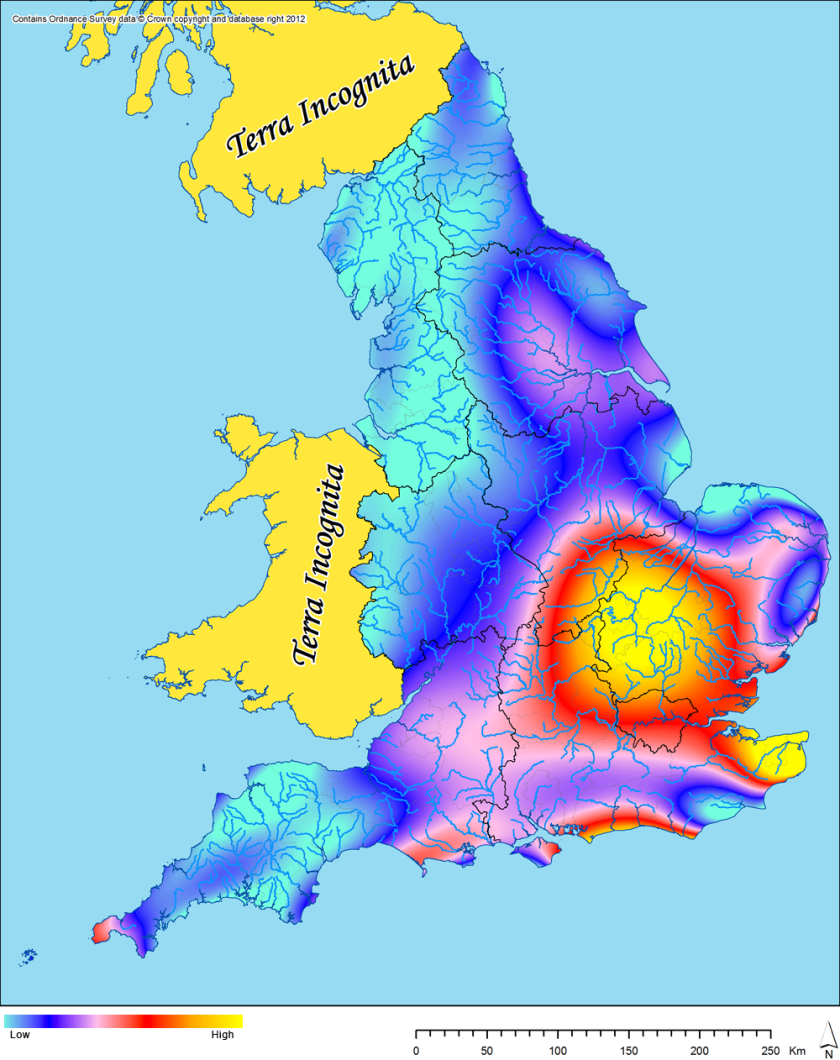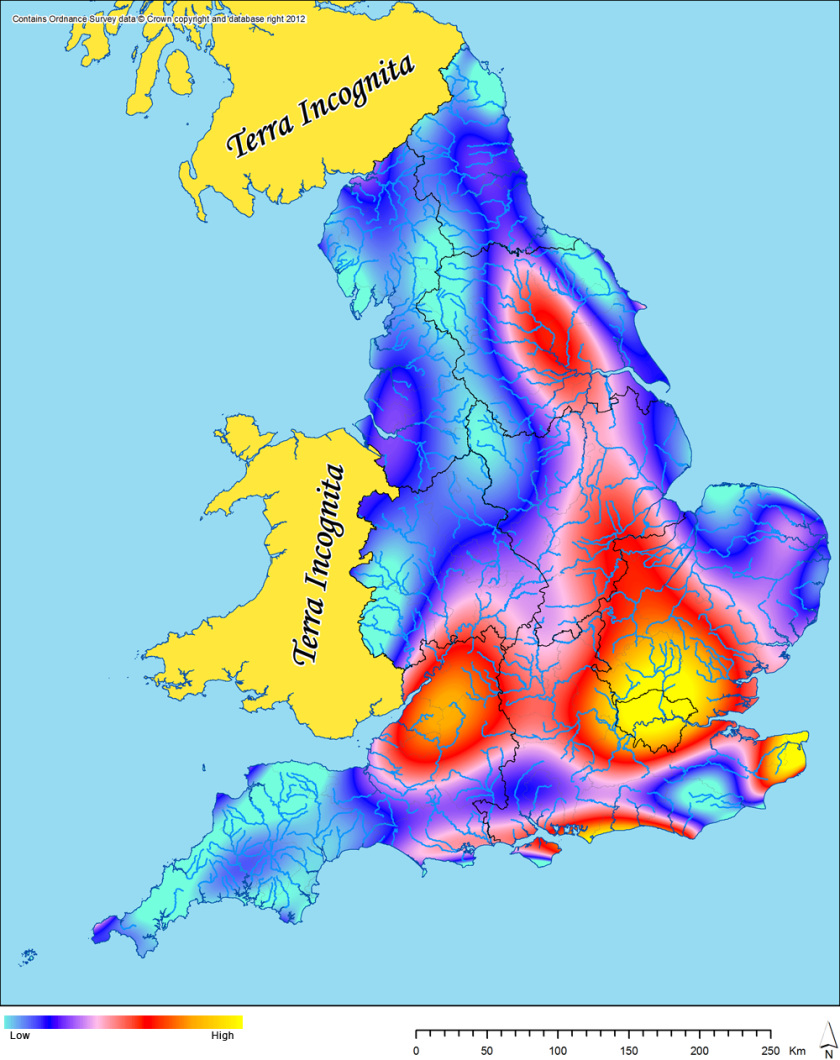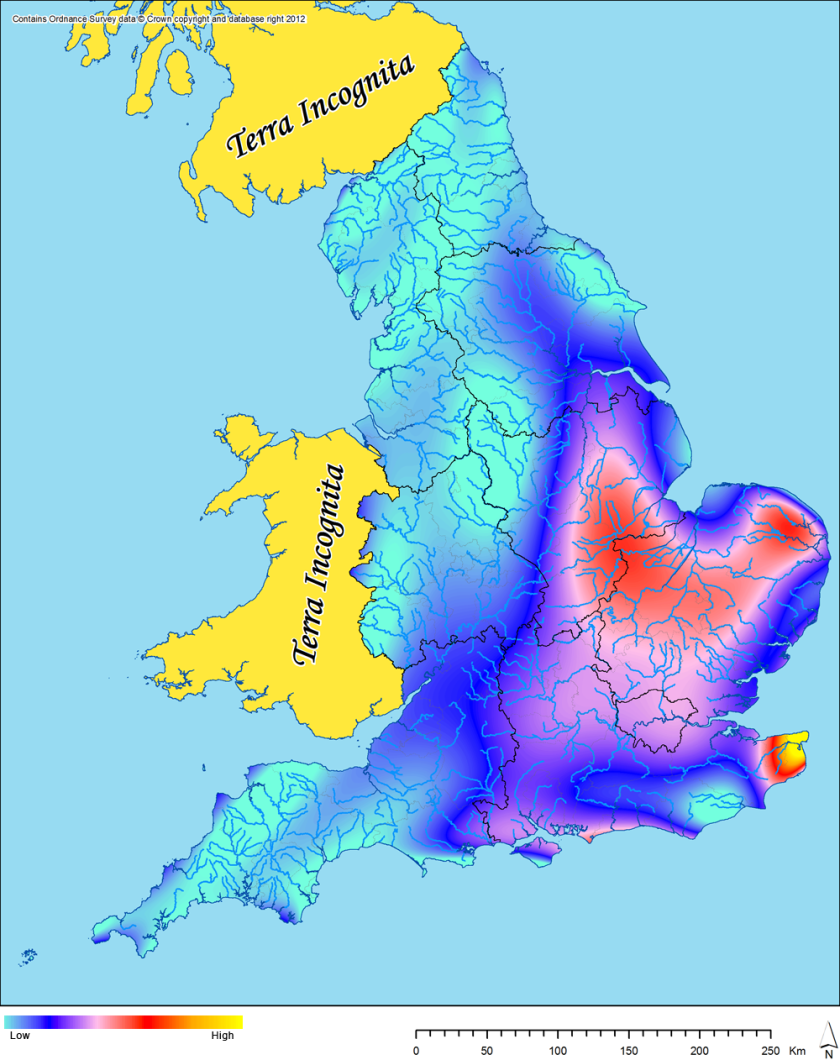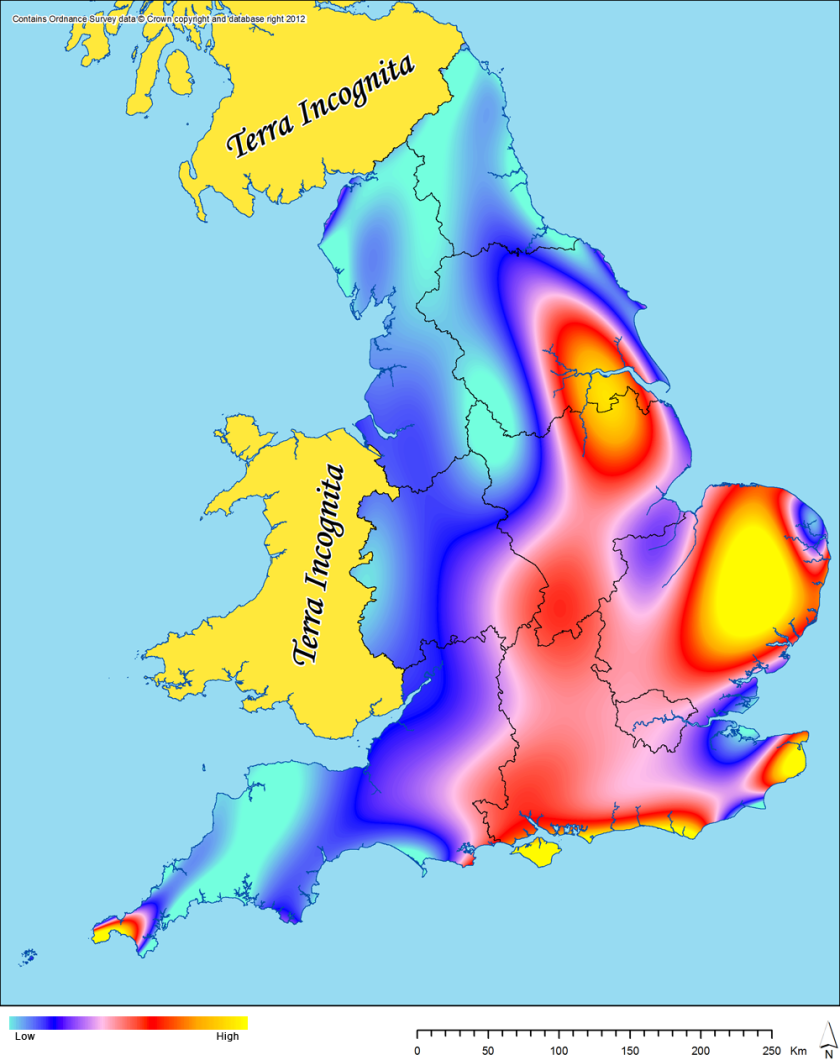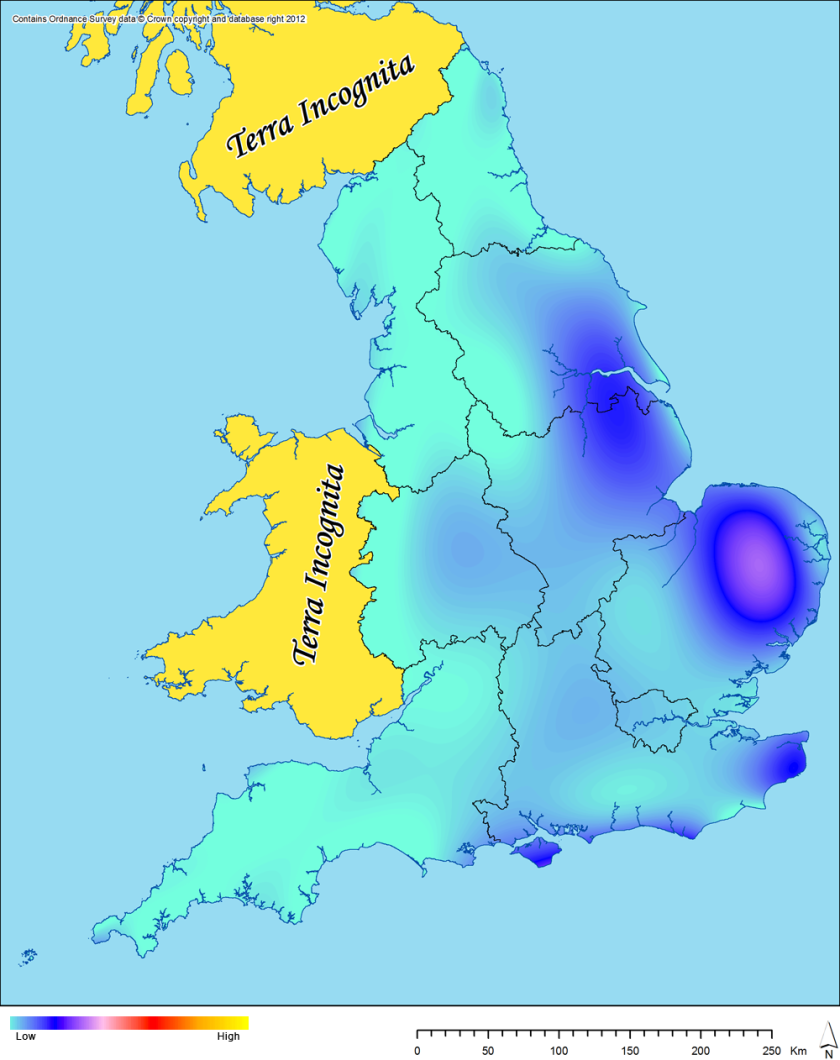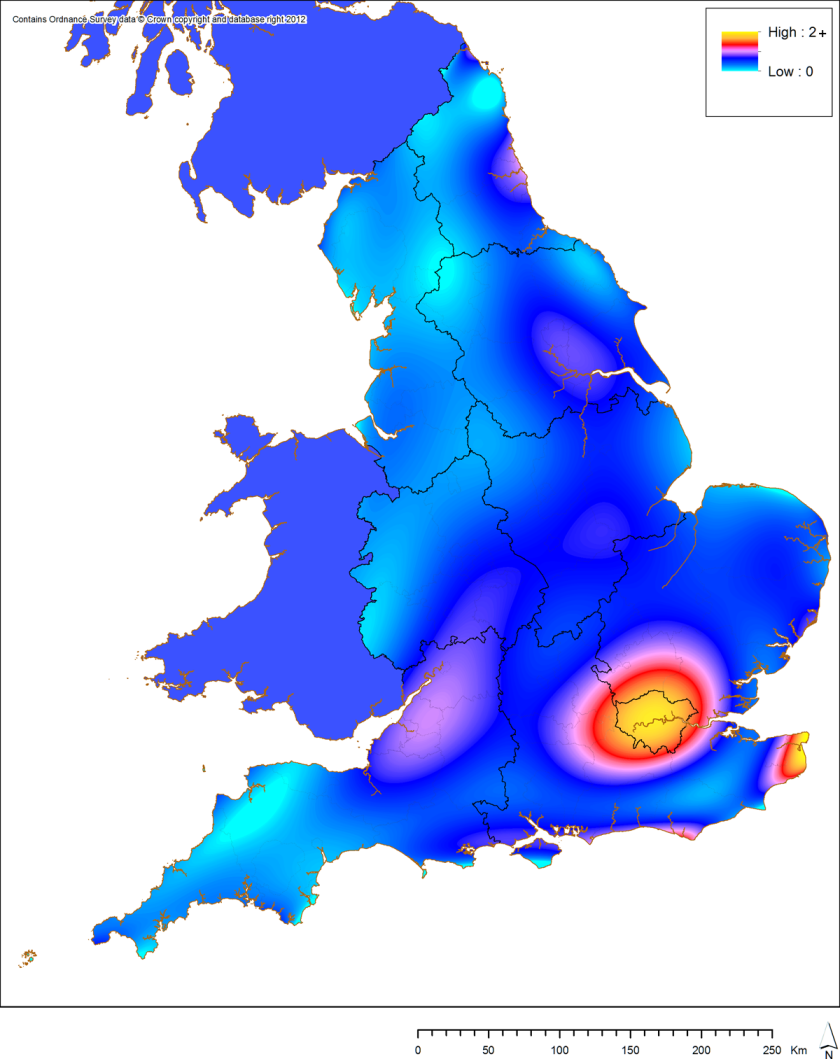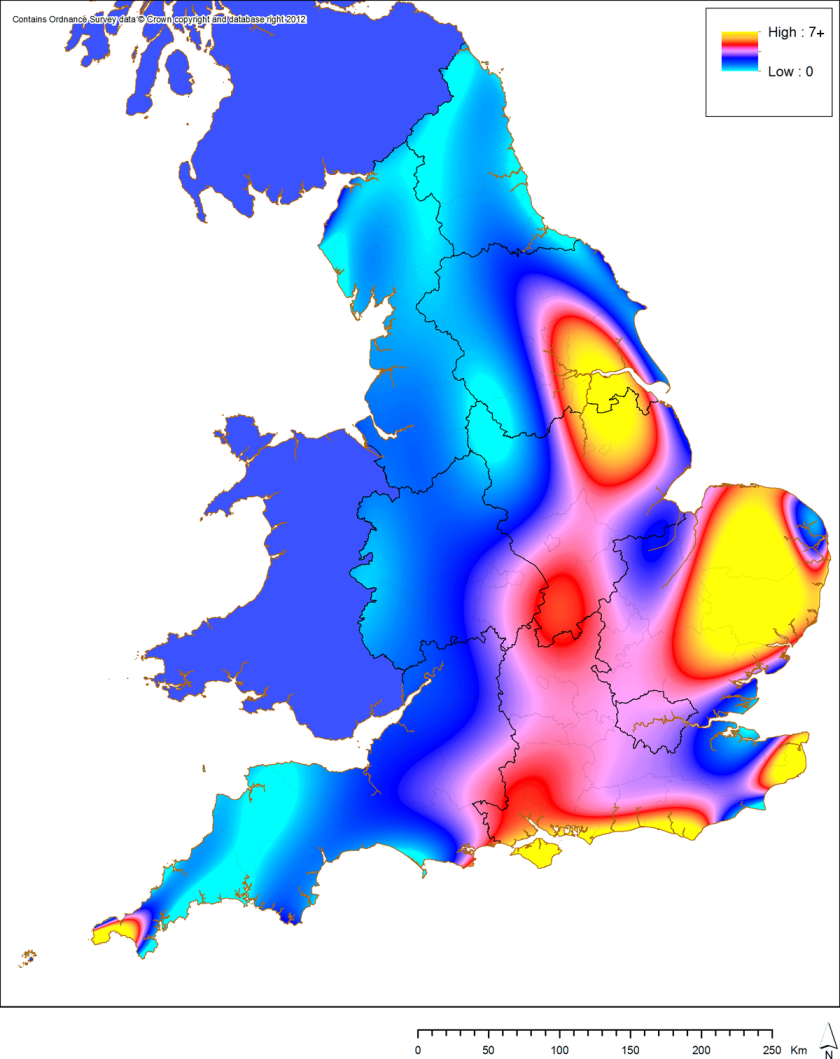Over the last few months, the Englaid researchers have been beginning the process of engaging critically with the mass of evidence we have brought together for case study areas. One outcome has been the production of case study evidence summary sheets – a useful way of considering and collating key qualities of the different evidence types available for these areas. For some case study areas (for instance in Cornwall and the East of England) we’ve also been liaising closely with local researchers so that we can try to link our own investigations into local research programmes – building on or making connections with existing, ongoing and imminent projects.
Unsurprisingly, now that we’ve started engaging in earnest with the vast body of data we’ve assembled, we’ve had some interesting discussions about how to integrate and also how to fulfill the research potential of the various evidence sets. This is obviously much more of an issue in case study areas where we will be viewing and analysing evidence at a site level, rather than through the coarser lens of 1km squares. For instance we’ve been thinking through methods of refining or cleaning data and also of enhancing it in various ways. We’ve also been considering at what level/scale ‘cleaned’ data becomes analytically visible or relevant (more to come on this …).
From this point onwards we’re hoping to provide regular updates on the blog regarding how we’re getting on with the case study analysis. For now, it’s worth mentioning that our initial rummaging about with the evidence from case study areas, has generated a slightly revised case study map (which Chris Green has kindly visualized for us).
Chris Green and I also thought we’d have a play about with how to produce ‘snapshots’ of the case study evidence using the text from the data summary sheets and medium of tag clouds (http://www.wordle.net/create).



Overall, we quite like the outcomes, especially once you start refining the tag clouds – grouping words into phrases like ‘watching brief’, removing the name of the case study area, and removing generic words like ‘archaeology’, ‘archaeological’, ‘site’, ‘report’ etc. (which I only did for the Isle of Wight and obviously you could fiddle about with this some more!).

The way in which geological information, the names of key sites and local researchers, evidence types, the structure of the documents themselves (headings and subheadings), and even the names of places which have strong research links with the case study area (in the case of the Isle of Wight, Oxford) become (more or less) evident and are juxtaposed is interesting. We also think that they work well as pithy reminders of some of the key traits of the case study areas.





